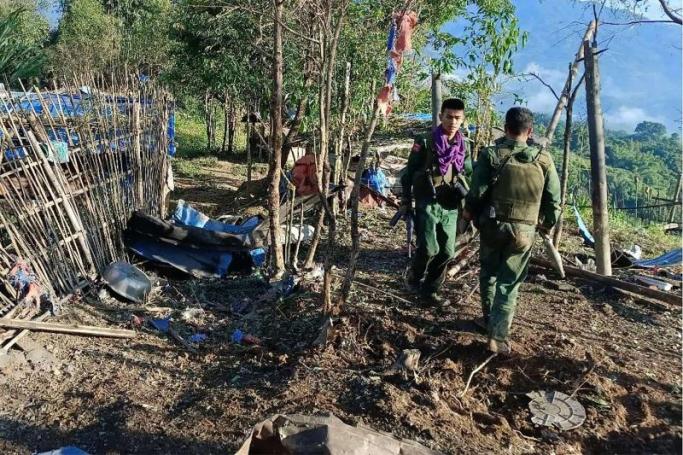Mizzima Insight
The world may be focused on the Israel-Gaza crisis but Myanmar has its own power play underway with ethnic resistance groups seeking to change the balance of power, and a call for a ceasefire.
Operation 1027 was born on 27 October as the Myanmar National Democratic Alliance Army (MNDAA) along with the Arakan Army (AA) and the Ta'ang National Liberation Army (TNLA) went on the offensive against Myanmar junta forces in Shan State.
WELL PLANNED
One week into Operation 1027, some things are abundantly clear. For starters, Operation 1027 was a well-planned undertaking long in the making, demonstrating a collaborative approach to countering the junta that two years previously would have seemed but a remote possibility.
The Shan State offensive, spearheaded by the Brotherhood Alliance of three long-standing EAOs and already having overrun dozens of junta outposts, has also incorporated elements of post-2021 coup elements: demonstrating the further congealing of operations among resistance factions. On the same day of its launch, heavy fighting was reported to the south along the Asia Highway, where the KNLA and local PDFs jointly operate.
REGIONAL UNDERTAKING
Second, Operation 1027 was likely designed as a regional undertaking with limited objectives, not the least of which is the TNLA’s drive to secure more territory to strengthen their position in calling for a separate state within Shan State. However, Operation 1027 has quickly taken on a life of its own, gathering momentum few could have anticipated. Karenni, Chin, Kachin and NUG spokespersons have all called for further offensives in other regions of the country, while Operation 1027 itself has now expanded into Upper Sagaing, with hostilities also being reported in the Naypyidaw Capital Region.
What is less certain is the full eventual fallout from Operation 1027 – with the notable exception of more fighting in other parts of Myanmar in the coming months. Should Operation 1027 and its progeny highlight the junta’s deteriorating military capability, we could see drastic changes in the political dynamics in Naypyidaw. This could take the form of the removal of Min Aung Hlaing – whose star has been waning for some time – and even the advent of some kind of transitional period. On the other hand, the stymieing of Operation 1027 would bolster assessments of a continued strategic stalemate for the foreseeable future.
CHINA INTERESTS
And then there is the role of China. Beijing has long coveted peace and security along its border with Myanmar, and it has not hesitated in the past to act against illicit gambling and other criminal activities. It is possible that, at China’s behest, there is some truth to the Brotherhood Alliance’s insistence that one aim of Operation 1027 was to suppress such activities throughout the China-Myanmar border region. But Beijing is almost certainly playing a longer game than cleaning up criminal activity on its doorstep.
China could well be growing weary of the inability of Min Aung Hlaing and the junta to restore order and protect its investments in Myanmar. If Beijing is seen as having given the green light to Operation 1027, then it could also be viewed as a means of placing pressure on the junta to adopt Chinese prescribed policy – in return for “reigning in” the Operation 1027 offensive. Certainly, China has no interest in the influx of large numbers of refugees onto its soil. At the same time, Beijing, by enhancing its influence among northern EAOs, may be situating itself to play a lead role in the future federal states of northern Myanmar.
IMPORTANT INFLUENCE
As such, continual assessment of China’s reactions to the latest events in Myanmar is essential. What Beijing decides may hold a key to the broader Myanmar conflict, let alone the future constitution of a post-junta Myanmar.
For now, it is still too early to assess the full impact and outcome of Operation 1027. And it should not be seen to supersede the rallying cry of “All roads lead to Nay Pyi Taw” as voiced by NUG Minister of Defense Ye Mon.
If anything, the immediate fallout from Operation 1027, with armed activities rising up in various corners of Myanmar in conjunction with and in support of Operation 1027, reinforces the underlying belief that ultimate victory for the country’s resistance forces will have to come from all areas of the country.












